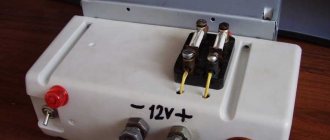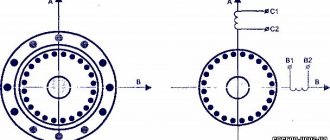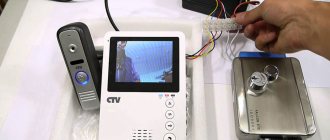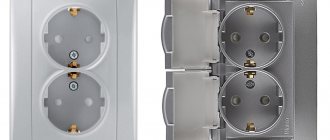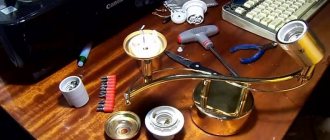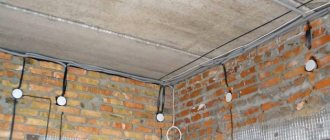The popularity of tumble dryers is growing. It is not difficult to install the equipment yourself.
It can be problematic to find a place in the room where the volumetric apparatus will be located. In this case, installing a washing machine and dryer in a column will be the ideal solution.
- Column installation technology
- Types of dryers
- Correct connection
- Vertical installation
- In the horizontal plane
- Expert recommendations
- Catalog of washing machines with reviews
Connecting the dryer to communications
Installing a dryer in a column also involves further connection to communications. The type of connection will depend on the type of dryer. Below we will look at all the options for connecting it.
Connection to ventilation
Everything is quite simple here. On one side of the case you will find a vent to which you need to connect the air duct. Fastening can be done using a special clamp. Usually this element is included in the kit. You need to know that you cannot bend the corrugation 90 degrees. Try to route the air duct with minimal kinks.
If the dryer will be connected in a room with a high temperature, then the flexible air duct cannot be routed through the top. In this case, you need to come up with another withdrawal option.
Connection to sewerage
If you purchased a condenser type dryer, then after each drying you need to remove the water tray. To make the work easier, you can connect it to the sewer. The connection in this case is no different from connecting a washing machine. You just need to lead the hose to the sewer.
Electrical connection
The last communication is considered to be the electrical network. To connect the dryer to the network with your own hands, you can remove a separate line from the distribution box. If necessary, if the dryer has low power, it can be connected to an outlet. To protect your equipment from overvoltage, you can connect an RCD.
As you can see, installing a dryer is a fairly simple process. Thanks to these instructions, you can save your money on calling a specialist.
Are we making outlets for the washer and dryer in the bathroom?
When installing devices in a column, special attention must be paid to their connection to the electrical network. It is imperative to provide a separate outlet for both the washing machine and the dryer. Otherwise, the point, when two units are turned on simultaneously, will operate at increased load.
If the washer and dryer are installed in the bathroom, it is better to purchase sockets with the maximum level of moisture protection.
Usually you have to install new sockets for cars. Therefore, even before installing the devices in the column, consider the location of the connection points to the electrical network. It is better that they are located away from the cabin, bathtub, washbasin and other “wet” objects. Then water will not get into them.
It is ideal to make sockets closer to the exit from the bathroom. This place is considered the most ventilated and safe. Of course, make sure that the machine’s network cables are long enough. It is prohibited to use an extension cord to connect washing and drying equipment to the network.
Sockets are placed on the wall, at a distance of at least 25 centimeters from the floor level. This is a basic safety requirement. The height can be greater, 40 or 60 cm, most importantly, not lower than the established minimum.
It is better not to “sculpt” the sockets too high - at a level of 180-200 cm from the floor level. It will be difficult for a housewife, especially a short one, to reach them if there is an urgent need to turn off the power to the appliances.
Once the placement plan is in your head, it is recommended to transfer it to paper. Draw a sketch, outlining how the wires will go from the panel to the sockets. This will help you calculate how much cable you will need to purchase.
It is necessary to think not only how many wires are needed, but also what their cross-section should be. Washing and drying equipment puts a heavy load on the network. The type of cable is determined based on the calculation of the power of the machines.
The power of the washer and dryer can be found in the instructions. Often such information is indicated on the device body. You should also “figure out” what other devices you will connect to the outlet. Based on these data, it is determined what the cross-section of the wire should be.
For example, a wire one and a half millimeters thick can easily withstand a load of 4.1 kW. This cable is suitable for both washing machines and dryers. However, experts recommend taking materials with reserve, so it is better to stick with a 2.5 mm thick wire.
Having found out what kind of cable is needed, you need to start planning the “route” of future wiring. It is important to follow several recommendations here:
- avoid “wet” areas (these are walls near the bathtub, shower, sink);
- do not plan to lay the cable along load-bearing walls - their surface is difficult to groove due to the reinforced mesh provided inside;
- the laying route should be the shortest - this will save on materials;
- the new wire should not intersect with other branches of the electrical network.
Care should be taken that the line is protected by a separate circuit breaker. This is necessary to protect equipment from power surges in the network. Experts recommend installing an RCD with a cut-off current of 10-16 Amps.
Before ditching the walls, draw lines on their surface in the places where the niche for the wires will pass.
The algorithm for organizing new outlets will be as follows:
- mark the locations of the sockets on the wall;
- draw lines repeating the wiring route;
- insert the metal crown for the socket box into the hammer drill;
- drill two round holes for sockets;
- start cutting a niche for the wiring along pre-marked lines;
- install two separate RCDs in the panel going to the bathroom. Remember that the conclusions must first be de-energized;
- connect the wires to the RCD and start pulling them along the grooves made;
- prepare some cement mortar;
- fill the holes for the sockets about a third with cement, install plastic socket boxes on top (plaster can be used instead of mortar);
- secure the wiring to the wall;
- lead the cores of each cable into “its own” socket box;
- fix the “insides” of the sockets in the socket box (note that the cement mortar should dry by this moment and “grab” the structure);
- connect the cable cores to the contacts of the sockets;
- install the outer part of the sockets.
Next you need to check how the made sockets work. Connect any household appliance to them. If all is well, you can close the grooves in the walls.
If you don’t want to ditch the walls, you can organize external wiring and cover it with special plastic boxes. However, this option is undesirable when laying the cable in a room with high humidity.
Installation methods
There are three common ways to install drying devices.
Mounting bracket
To place the dryer on top of the washing machine, you can use special mounting brackets, which are often supplied with the device. If they were not included in the kit, you will have to purchase such parts separately.
The fasteners are installed on top of the washer body so that the dryer can be attached to them. Without mounting fasteners, you should not install the device on top of the washing machine, since without reliable fixation the product may tip over due to operating vibration. Also, such fasteners are installed to additionally protect the surface of the dryer from scratches and other damage.
Reiki
Some people do not want to use mounting fasteners and therefore try to secure products in other ways. Often, strong wooden slats are used for this, which are attached to the surface of the wall. Then a dryer is attached to the installed slats, installed on top of the washing machine.
It is necessary to attach the slats to the wall very carefully and securely so that the structure does not become detached and fall.
Niche
There are times when it is not possible to place a dryer on top of a washing machine and you have to look for other methods of fastening. The most common is the use of a special niche, which is installed on the floor surface. You can purchase it or make it yourself. To make a high-quality niche, you can use high-strength plasterboard. When installing the device in a niche, you must remember that vibration occurs during its operation. Therefore, the distance between the wall and the structure should be 3-4 centimeters.
Connecting a dryer: how to install two units in a column
How can you secure the dryer on top of the washing machine correctly? First of all, you need to think about making sure that the surface where the machine will stand is level. It is best to install the equipment on a concrete or tiled floor, but not slippery.
Installing a dryer on a washing machine is quite possible. But this is possible if the washer is loaded from the side and not from the top. This is an excellent option for installing both machines, especially since they are functionally interconnected.
The washing machine must be level. Only when you are sure that the first appliance is aligned correctly can you proceed with the installation of the dryer.
In an apartment or house, installing machines yourself is done as follows:
- A dryer stand is installed on the washing machine;
- Rubber seals must be placed on it;
- Secure the stand and seal with bolts;
- Place the dryer on the washing machine, ensuring that the legs fit into the special slots;
- Close the recesses from the outside with plugs.
This method of installing machines is very relevant for owners of one-room apartments, where there is very little space, and every centimeter of space has to be saved.
Features of placement of machines from different companies
There is no big difference in the installation of machines of different brands. The requirements for installation reliability are the same in all cases. For paired installations, it is recommended to use models of the same brand. This choice has a number of advantages:
Manufacturers offer sets of two units with fasteners, which greatly facilitates installation and ensures the safety and reliability of the design; some brands, for example, Bosch, Siemens, Asko and Gorenie, produce machines designed to be placed in a column, where the body of the washing machine is reinforced specifically for the weight of the dryer; connecting strips of such structures are specially designed to dampen vibrations and maintain stability; models from Bosch and Siemens may have a pull-out shelf; Asco has such a shelf equipped with a special laundry basket; drying units from Asko are equipped with additional fastenings for the legs; the Slovak Goreniya has suction cup legs; the undoubted advantage of choosing models from the same brand is style uniformity and the same dimensions, the latter condition is especially important for maintaining sustainability; when choosing narrow options for a small area, it should be taken into account that devices from Asco have a minimum depth, taking into account the mandatory free space at the back, it is 65.6 cm.
In cases where placement in a column is not allowed, the instructions indicate the minimum distance from above, which is necessary for the operation of the devices.
Column washer and dryer: Bosch and other brands
How to install two work surfaces - a washing machine and a dryer so that they do not take up much space, but take up space to a minimum? To achieve this, they have recently begun to use a method of organizing useful devices into a column.
You can always install a clothes dryer on top of the washing machine in any free room. This placement of machines can be used in the kitchen, in the bathroom, in a separate laundry room, and even in the hallway. But it should be understood that the devices need to be secured in such a way that the vibration emanating from one machine does not cause the other to suffer or fall. In addition, vibration should not affect the performance of both machines.
There are several mounting options:
- Installing the dryer on top of the washing machine using a special mounting bracket included with the dryer;
- Securing the dryer to slats that are mounted on the wall above the washing machine. For this case, the most important thing is to take into account the load to which the wall and shelf will be subjected, and safety precautions when fastening;
- Mounting machines into niches that can be made of thick plasterboard, plywood, or other suitable material.
Each home owner, taking into account the characteristics of the premises, can develop his own option for installing machines.
Column installation technology
How can you place two devices to save more space? Recently they have been arranged in a column. In this position, the machines are as close to each other as possible and occupy a minimum of space, which saves not only space, but also the user’s personal time.
Dryer above washing machine
Washer under dryer
With this type of arrangement, the washing machine is located below the dryer. This can be done in any convenient room. The location of such a set of devices can be a bathroom, kitchen, corridor and even a storage room.
In this case, it is necessary to ensure that the vibration created during operation of one device does not affect the second. Otherwise, it may negatively affect its performance.
Installation options:
- You can use the mounting bracket that comes with dryers.
- Using slats fixed above the washing machine. In this case, it is necessary to take into account the load on the shelf and wall.
- Installation in a niche.
The installation option is selected individually according to the wishes of the owner of the equipment, as well as the complex characteristics of the room in which it is planned to install the washing machine and dryer in a column.
Dryer placement
There are different ways to install a dryer. First of all, you need to proceed from the characteristics of a specific model, the amount of electrical equipment and the layout of the house. Most often, the dryer is installed in one of the following ways:
- on or above the washing machine;
- next to the washing machine;
- in a separate place (niche, closet, corner, etc.);
- under the tabletop.
In most cases, the dryer is located on top of the washing machine. Naturally, this option is only relevant for horizontal-loading washing machines. If things are loaded into the washing machine vertically, it is not recommended to install a drying unit above it, since this option will be inconvenient to use.
The key advantage of being positioned on the washing machine is that it saves space. Most units are equipped with special mounts for installation above the washing machine.
You need to use suitable fasteners; you can’t just put the car on top. If you simply place a dryer on top of a washing machine, both units may fail because they are not designed to withstand external vibration. Moreover, due to vibration during the washing process, the dryer may simply fall and break.
There are 2 options for mounting the drying unit:
- Fastening elements included in the delivery kit.
- On a specially mounted shelf. To install the latter, you can use available materials.
Naturally, the easiest way is to install the equipment nearby. However, in most modern apartments this is impossible to do due to limited space. This option is suitable only for the most spacious bathrooms.
Installation above the washing machine
When installing a dryer above a washing machine, you need to consider the following points:
First of all, it is important to correctly position the washing machine above which the drying unit will be installed. A special stand is installed on the washing machine to place the dryer. It is advisable to lay a rubber lining between the units. This will minimize vibration and, accordingly, reduce the degree of negative impact of one device on another. After installing the pad, you should install the dryer stand. The dryer should be placed on a securely fixed stand. All grooves, fasteners, etc.
you need to glue, paint over, cover up or perform other actions based on the parts used for installation.
Only after high-quality, reliable and correct installation can you begin to operate the equipment. While devices are not secured, they cannot be turned on.
Installing a dryer near the washing machine, in a niche or corner, is much easier. In this case, there is usually no need to use additional fasteners. However, each case has its own installation features. Including, you need to take into account the features of the layout and decoration of the room.
Placement methods
There are several ways to install a dryer yourself. In apartments and private houses installation can be carried out as follows:
- on top of the washing machine;
- next to the “washing machine”;
- in a special niche or closet;
- under the tabletop.
The most popular option is to install a dryer on a washing machine, which is also called “in a column”. In this case, you can save free space, which is especially important in small one-room apartments. In order to install the “dryer” above the washing machine in a column, you need to use special fasteners that are included in the kit.
Installation is quite simple - anti-tip mounts and special caps are installed on the washing machine body. After this, the body of the dryer is attached to the caps, the legs are unscrewed and the equipment is leveled. There is also the option of attaching to the wall using special slats, but it is used extremely rarely. The only important point is that the washing machine should not be narrow (this means dryers), otherwise the stability of the upper body will be questionable.
Please note that installing a dryer in a column without fastening and anti-tip elements is strictly prohibited. Firstly, these parts protect the washing machine from damage from vibration, and secondly, they give stability to the dryer so that the equipment does not tip over during operation.
Here are some visual instructions for installing a dryer on a washing machine:
How to install equipment correctly
An easier installation option is next to the washing machine. In this case, more space will be required, but at the same time the equipment will be more stable and there will be no possibility of a negative impact of the dryer on the washing machine during operation. Most often, this option is used in spacious houses and apartments with a large bathroom or a separate room, for example, a wardrobe or laundry room. Installation is not difficult; you just need to install the case in the right place and unscrew the legs so that the equipment is set strictly at level.
If you are just renovating your apartment and are thinking about installing a drying machine, you can make a niche for it from plasterboard in advance. A more complex, but convenient option is to make a special cabinet for installation in a column. We recommend viewing both the first and second ideas in photo examples:
Well, the last installation option is under the countertop or sink. If the dimensions of the equipment are small, why not save space and install the case in the kitchen unit? This idea is very popular, and if you choose a condensing model, the sewerage system will be nearby, which will simplify connecting the dryer to the drain.
How to connect
There are certain features of connecting a dryer that need to be dealt with in advance.
Ventilation
Some people think that connecting a dryer to the vent is difficult, but this is not true. On one side of the dryer there is a special hole through which it is connected to the ventilation system. To secure the connecting corrugation, special clamps are used, which are supplied with the device.
The second side of the corrugation can be brought out into a vent in a window or into an opening in the central ventilation system
You must connect such a tube very carefully so that it does not bend by 80-90 degrees, as this will make it work worse
Sewerage
Condenser dryer models must be connected to a sewer system into which excess liquid will drain. Most of these devices have holes through which they are connected to the sewer. To connect the dryer and the sewer system, a regular hose is used, which can be led into the toilet, sink or separate drain.
Electricity
The last communication to which you need to connect the dryer is the electrical network. To connect it to a power source, you need to select a separate line on the distribution box. You can also use a free outlet. However, to connect such powerful equipment, you must use sockets that are equipped with separate grounding. However, experts do not recommend connecting a washer and dryer to the same double outlet at the same time.
Horizontal installation
Sometimes it is not possible to place the dryer in a vertical position and you have to place it horizontally. The main disadvantage of this method of placing equipment is that it will take up a lot of free space. Therefore, they are placed in a horizontal position in spacious apartments where there are large bathrooms with utility rooms. Installing household appliances horizontally is much easier than vertically.
Under the sink or countertop
The most “compact” way to create a vertical column involves installing it under a countertop or sink. Moreover, they can be in close proximity to each other. For this installation option, it is necessary to provide for the availability of communications in advance, as well as the possibility of embedding at the washing machine.
Installation methods
There are two ways to secure the structure:
- using the fasteners that come with the dryer;
- using additional slats that are mounted on the wall above the washing machine.
The second option is used very rarely, since it is more convenient to use fastenings for drying.
Special mounts
These mounts are sold with your dryer. They are best suited for mounting the dryer on the surface of the washing machine.
Reiki
The slats are fixed to the wall directly above the surface of the washing machine. In fact, they form a kind of shelf on which the dryer is installed.
Niche
The niche is made of plasterboard. In addition to this, you need metal corners, putty, fasteners, finishing materials, and, most likely, a person who will make a niche out of all this, suitable in height, width and depth for installing a drying machine.
A type of niche can be a rack, where a washing machine will be installed on the lower “shelf”, and a dryer on the upper one.
Types of dryers
There are three types of dryers that people use most often.
Condensation
From the name of the technique, it becomes clear that when drying wet laundry, a process of liquid condensation is used. The drying process begins with heating the air to high temperatures, due to which the fabric gets rid of moisture. Then the laundry is cooled and moved to the lower part of the structure, where the heating element is located. The procedure is repeated several times. During this time, the liquid formed as a result of condensation moves into a special tank.
Among the advantages of condensing units is that there is no need to carry out additional work to install an air exhaust system. Therefore, such models can be installed in any room.
Exhaust
Exhaust dryers are used less frequently as they are considered obsolete. The main advantage of these models is the simplicity of their design and reliability. The operating principle of exhaust hoods is that excess moisture is drawn into a special ventilation hole. Therefore, before installing the dryer, you need to install a high-quality air duct. However, some people install equipment without it, which leads to increased humidity in the room and the appearance of mold and mildew on the surface of the walls.
People who live in a country house or in a private house should install the structure on the street.
With heat pump
Many manufacturers are trying to improve dryers so that they dry things better. Therefore, some models are equipped with a special heat pump, thanks to which drying becomes better.
Heat pumps are installed inside dryers to pump dry air so that it can better flow inside the device's chamber. The air then enters the evaporator, where it is cooled using a special refrigeration element. As a result, moisture collects from the surface of the fabric, causing things to dry.
Drying machines: main types
Today on the market you can find a decent range of drying machines of different manufacturers and models. All of them are divided into 3 main types depending on the installation method:
- exhaust;
- condensation;
- with heat pump.
Automatic machines of the first type dry clothes by venting air from the machine into the ventilation shaft. Condensation-type models pass warm air through a drum, after which the condensate is collected in one place - a collection container. It has to be washed regularly, after each cycle. Heat pump appliances operate through an evaporator and remove excess moisture directly into the drain.
Ventilation models are traditionally in greatest demand among buyers. Their installation is possible both in private houses and in apartments. The other two types of cars are less popular.
The most frequently sold and in demand brands of drying machines: Bosch, Samsung, Siemens, Miele, Whirlpool.
Installing a dryer in a column with a washing machine
You can only connect a dryer on top of a washing machine using a special fastener. Many manufacturers of drying machines also include mounting brackets with their models. But sometimes, you have to purchase it yourself.
These connecting parts are also needed to prevent the machine from tipping over during operation, and in addition, they protect the washing machine from damage due to vibration. However, you should take into account that errors or illiteracy during installation will certainly create complications during operation. In view of this, if you are unsure of your own abilities, it is best to entrust the installation of devices to professionals.
Tips for installing and using machines:
- Do not stack machines directly on top of each other without perfect mounting. It is forbidden.
- Under no circumstances should you turn on two machines at the same time, even if you are sure that the wiring will withstand the load;
- It must be remembered that for vibrating machines it is necessary to leave a free space of 2-3 cm from the wall.
- Try to ensure that both machines are from the same manufacturer;
- If it is not possible to choose cars of the same brand, buy the same size.
When planning to install machines one on top of the other, be sure to check and clarify the availability of communications that will provide electricity, water and its drainage for both machines.
How to install a dryer
There are several main ways to install a laundry drying unit:
- on top of the washing machine;
- in a pre-made plasterboard niche;
- in the same horizontal plane with the washing machine;
- in the bathroom (kitchen), under the sink or countertop;
- on the balcony.
Let's take a closer look at each of the methods.
Installation "over"
Installing a dryer above a washing machine in residential areas will save valuable space and make the washing and drying process as comfortable as possible. You can install the equipment in any room or utility room.
Have you chosen this option for yourself? There are 2 possible mounting methods:
- Using the fasteners included with the dryer.
- Using additional slats mounted on the wall above the washing machine (used extremely rarely).
Follow the instructions below to secure the unit as securely as possible.
- Level the washing machine above which the new equipment will stand (ideally, it should be placed on a flat surface - a concrete or tiled floor).
- Place the top unit stand on top of the washing machine.
- Place rubber seals between the lower unit cover and the stand to reduce vibration.
- Secure the stand with bolts.
- Place the unit on the stand so that the legs of the device fit neatly into the existing grooves.
- Seal the outer recesses on the mount with plugs.
Important! Placing a washer and dryer in a column is the most difficult option. Here it is necessary to adhere to safety precautions and installation rules so that the structure does not collapse during operation. Placing equipment one above the other without using special fastenings is strictly prohibited!
Points to pay attention to when placing vertically:
- Do not use fasteners whose quality you doubt.
- Pre-calculate the load that will be placed on the wall.
- Never turn on 2 units at the same time (even if you are sure of the quality of the fastenings and the reliability of the wiring).
- Remember: the dryer vibrates a lot during operation, so leave a gap of a couple of centimeters from the wall.
- If possible, buy household appliances from the same company. When included, it will look as harmonious as possible, fit perfectly into any interior, and the fastenings will fit perfectly.
- Is it not possible to buy units from one manufacturer? Choose devices of the same size (the overall dimensions of the lower equipment should under no circumstances be smaller than the dimensions of the dryer).
- Never place a clothes dryer under a washing machine, as the latter always weighs much more and vibrates much more during the washing process.
Side by side installation
We have sorted out the sequence of actions when installing a dryer above a washing machine in a column. A very simple option to implement is to install the equipment nearby. You will have to free up more free space. This method of placement is suitable for apartments and private houses with large rooms and utility rooms.
Installation is as easy as shelling pears: the unit is placed in the right place, after which its legs are unscrewed to the desired level.
Placement in a niche
In the process of renovating an apartment, you can provide a special niche for the dryer. To make it, you will have to buy drywall, metal corners, putty, finishing materials, fasteners and invite a specialist who will perform the necessary work.
This installation method is more labor-intensive and expensive, but also practical. Subsequently, you will receive an attractive interior into which household appliances will be harmoniously integrated.
Placement in the bathroom
Most often we are talking about installation under a countertop or sink. This option is not suitable for small spaces. At the same time, it will be quite simple to complete the installation work and just as easily connect the equipment to the sewerage or ventilation system.
Important! When installing the dryer in any place and in any way, make sure that the necessary communications are available - grounded outlets, access to the sewerage system and ventilation pipe.
Experts advise placing devices for washing and drying clothes only in well-ventilated rooms, in order to avoid the accumulation of moisture and its rapid failure.
You have already realized that there are different ways to place drying equipment in your home. In the process of choosing the optimal location, focus on the characteristics of the purchased device, the size and features of the premises, and the location of communications.
The most important rule is that the installation must be safe. Doubt your abilities? Entrust the installation to a professional who knows all the intricacies of this matter.
Benefits of using a drying machine
Before using the machine to dry washed clothes, you need to familiarize yourself with the advantages of these devices. The advantages of dryers include the following:
- The process of drying clothes is carried out very quickly and efficiently. After this, you don’t even have to hang things up to dry.
- The functional features of the devices allow you to dry clothes to the required level of humidity. This allows you to efficiently dry things made from capricious fabrics.
- The evaporation of moisture inside the dryers helps smooth the fabric. Therefore, there is no need to iron them again.
- Possibility of refreshing linen. This allows you to get rid of unpleasant odors that are embedded in the fabric.
However, such devices also have some disadvantages that you need to familiarize yourself with before purchasing and using them:
- high cost of modern models;
- bulkiness, due to which a lot of space will be required to install the dryer.
Which is better - a washer and dryer or a washer and dryer combo?
What is better: universal equipment capable of performing different tasks, or several specialized devices? Let's try to answer this question by comparing a washing machine and dryer with a washer and dryer set
. Read our material to understand the differences and, if necessary, make the right choice.
Difference 1. Dimensions
Let's start with an important factor - the dimensions of the devices. It is worth noting that two free-standing devices take up more space than one multifunctional one.
At the same time, washing machines and dryers can be installed on top of each other in a column
in order to significantly save space.
Thus, they will take up the same amount of space as a washer-dryer
.
Difference 2. Load volume
It is worth noting that the maximum load of washing-drying machines when washing reaches 10 kg, and when drying – 6 kg. This is due to the fact that during drying heated air must flow freely into the tank
, so the interior space should remain half empty.
Freestanding washing machines can hold up to 10 kg
things, and dryers
- up to 9 kg
.
In other words, freestanding dryers can dry more items in one cycle.
than washing machines and dryers.
Difference 3. Functionality
Tumble Drying
Most often it is carried out by a timer, and in some modern models - by residual humidity (under the iron, in the closet, very dry).
In dryers
In addition to timed drying and residual moisture, there are additional programs for various types of fabrics that provide proper care for clothes and help extend their service life.
By the way, Electrolux washing machines and dryers have a special lint filter
, which collects lint from clothes that is formed during drying, as well as pet hair, hair and dust particles.
Installing two devices in a column correctly
There are three ways to install devices in a column, each of them differs in the nuances of fastening:
- The first option involves the use of an anti-tip kit, which is applied to the surface of the underlying device; the stability of the structure can only be ensured by standard fasteners recommended by the manufacturer.
- The second one rests on the rack fastener for the dryer; it is fixed on the wall above the level of the washing machine; in this case, the strength of the supporting wall will need to be taken into account.
- The third allows you to build both devices into a niche, which is assembled from load-resistant plasterboard or other high-strength materials.
The choice of the preferred method of installing a washing machine and dryer on top of each other or in a column depends on the layout, design, design features of the units, and other factors. In any case, the machines must be installed in compliance with certain rules:
- The recommendation remains unchanged to choose models from the same manufacturer that are similar in overall dimensions.
- If it is not possible to choose this option, you need to focus on the dimensions, which must match.
- The dryer is always placed above the washing unit, it is lighter in weight, its vibration is not so intense, which provides the necessary level of safety.
- The area for placing the equipment must be level, the lower unit should be placed level so that the column is strictly horizontal.
- It is undesirable to place the units on wooden or other soft floors, they increase vibration; the floors must be hard and prevent slipping during operation.
- The recommended distance between the devices and adjacent walls should be strictly observed, especially when choosing installation in a niche and on the rear side, where at least 2 to 3 cm of free space should be left.
It is important to remember that fixing devices without a reliable fastening strip and following other rules is fraught with loss of stability and the column falling. Breakdown of expensive equipment is not the only consequence of such negligence; it can pose a threat to the health of family members and especially children
Installation nuances
Let's talk about what is important to consider when installing a washer and dryer, and what may be required. First of all, we note that the best option would be to install machines of the same brand (manufacturer), since they will match perfectly in terms of dimensions and the mounting mount will also work well. In addition, such machines will look more harmonious and stylish in appearance, without disturbing the design of the room.
If you bought a clothes dryer much later than a washing machine, and you had to buy a unit from a different brand, or there is simply no machine of the same brand on sale, then you need to choose a dryer that is most suitable for the washing machine both in width and depth. The dryer should not be larger than the washing machine. It is also important that you can only install a dryer above a washing machine. This is because it is lighter in weight and vibrates less.
The easiest installation method will require you to use a special mount. If you place the cars in niches, then to make the niches you will have to prepare: drywall, metal profiles, putty, finishing material, knife, spatula, screws and other tools and materials. This method is usually chosen when major renovations are needed in the bathroom or hallway. As a rule, a specialist is invited to carry out the work. Instead of a niche, you can make a cabinet for a washing machine and dryer.
When installing a washing machine and dryer, consider the location of communications. Not only may separately grounded outlets be required, but also access to sewerage.
Important! You cannot run the washing machine and dryer at the same time; for safety reasons, this is done alternately.
Everything will depend on the type of dryer. Exhaust clothes dryers must be connected to ventilation, or the ventilation must be vented through a vent, which can create additional difficulties. Condensation dryers are not connected to ventilation at all; in them, steam is condensed and collected in a special tray, which is poured out after each drying. To avoid this, the condensate is discharged into the sewer by connecting the hose in the same way as for a washing machine.
Progress
How to secure a dryer above a washing machine? First of all, you need to make sure that the surface on which the machine stands is level. It is advisable to install the equipment on a concrete or tiled floor, but not a slippery one. The washing machine is leveled. Only after this can you begin installing the dryer.
A dryer stand is installed on top of the washing machine. In this case, rubber seals must be laid between the stand and the lid of the washing machine, which will dampen the vibration of the equipment. The stand is secured with special bolts. After this, the clothes dryer is placed on a stand so that the legs of the machine fit into special recesses. The recesses on the outside are closed with plugs.
So, there are three ways to install a clothes dryer above the washing machine. Choose a method depending on the location of the equipment, the characteristics of the room and the connection to communications. The main thing is that the installation is safe. If you are not confident in your abilities, entrust it to a specialist who knows all the nuances of this work.
Interesting:
- How to install a washing machine in the kitchen and bathroom
- Is it possible to install a washing machine in the hallway
- Where to put a washing machine in a small bathroom
- Miele stacked washing machine and dryer
- How to choose a clothes dryer?
- Bosch washing machine and dryer in a column
Reader comments
- Share your opinion - leave a comment
Myth 9. Drying spoils items made from delicate fabrics.
In the new Candy models, drying is implemented using a heat pump, that is, a lower temperature is used than in condensing machines. This in turn does not wear things out, as already stated. Also, let's not forget about special drying modes, for example, the mode for wool - they are designed specifically for delicate fabrics.
In addition, modern washer-dryers are equipped with a steam mode, which not only saves electricity, but also helps to carefully wash delicate fabrics: steam treatment resembles boiling in its effect, but colored fibers retain their color. By the way, steam also disinfects clothes quite well, which is very important for children's clothes or things for people with allergies.
Recommendations and videos
More details:
- You should not install devices one on top of another just like that. This is a gross violation of operating rules and regulations and is therefore strictly prohibited.
- While the dryer is running, the washing machine should be turned off and vice versa.
- Do not forget that vibrating devices should not be placed close to the wall. There should be at least 3 cm between them.
- Two devices of the same brand are more convenient to use, and this option should be preferred.
- If it is impossible to purchase devices from the same company, they must still fit in size.
Installing washing machines and dryers in a column is a rational and simple way. It's not difficult to do this yourself. Before you start work, you need to study all the nuances. You should take care of the accessibility of communications, prepare a mount if necessary, and also carefully read the operating instructions for the device.
What you will encounter in column fastening of machines from different companies
If you talk to the manufacturers of washing machines and dryers, you will encounter a number of features. Distribution based on company principle.
We advise you to choose the washing machine and dryer from the most popular brand possible. Any number of parts mishaps won't cause you any trouble, you'll quickly find replacement parts to get your washer and dryer back up and running.
Installation depends on the type of dryer
How the process of installing a new dryer will proceed depends on the room and type of dryer.
First of all, it is important to decide on the type of drying, which can be exhaust, condensation or heat pump. The operating principles of the machines are different, which is reflected in the nuances of their connection.
- Exhaust systems work by removing air with moisture into the ventilation system, so the machine must be connected to home ventilation.
- Condensing machines direct heated air into a drum containing wet laundry, where it “collects” the liquid from the fabric. Next, the flow goes into the provided heat exchanger to “dump” the vapors, and the “dumped” moisture settles in the provided container. It needs to be emptied, so for convenience it needs to be connected to a sewer.
- Heat drying units are similar to condensing models with the difference that the moist air does not pass through a heat exchanger, but an evaporator.
The most difficult thing to work with is exhaust models, since they require connection to an air duct. Not all city apartments and private houses provide the opportunity to easily connect to centralized ventilation. But fewer and fewer such machines are being produced - manufacturers are actively replacing them with condensing and “heat pump” ones. We will talk about their installation in the article.



